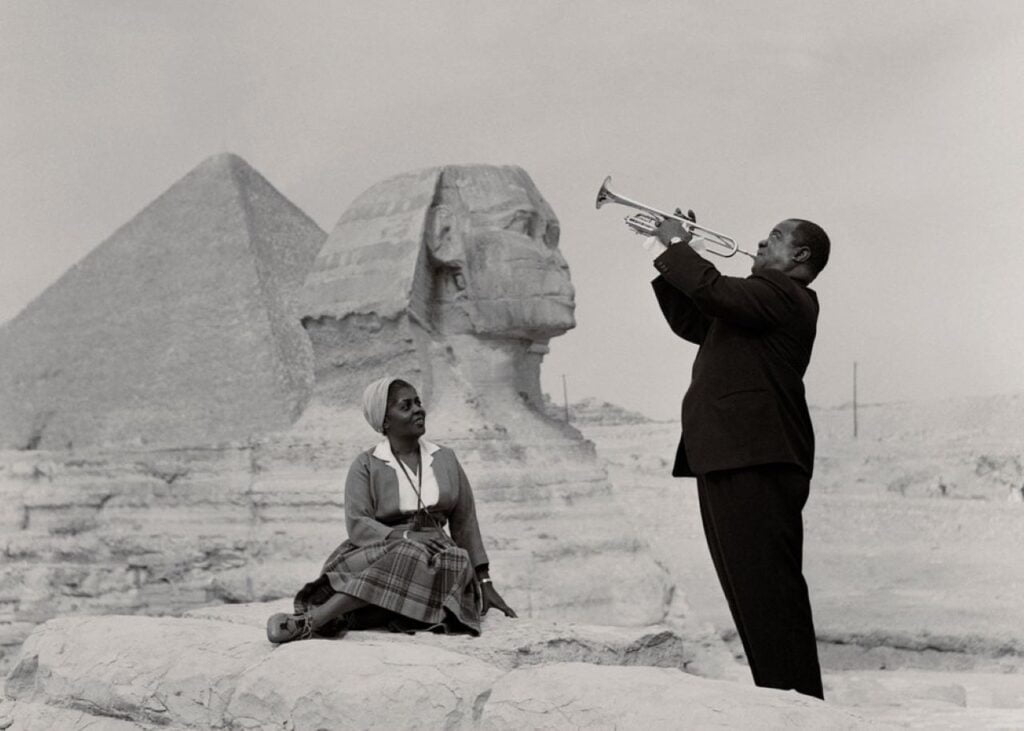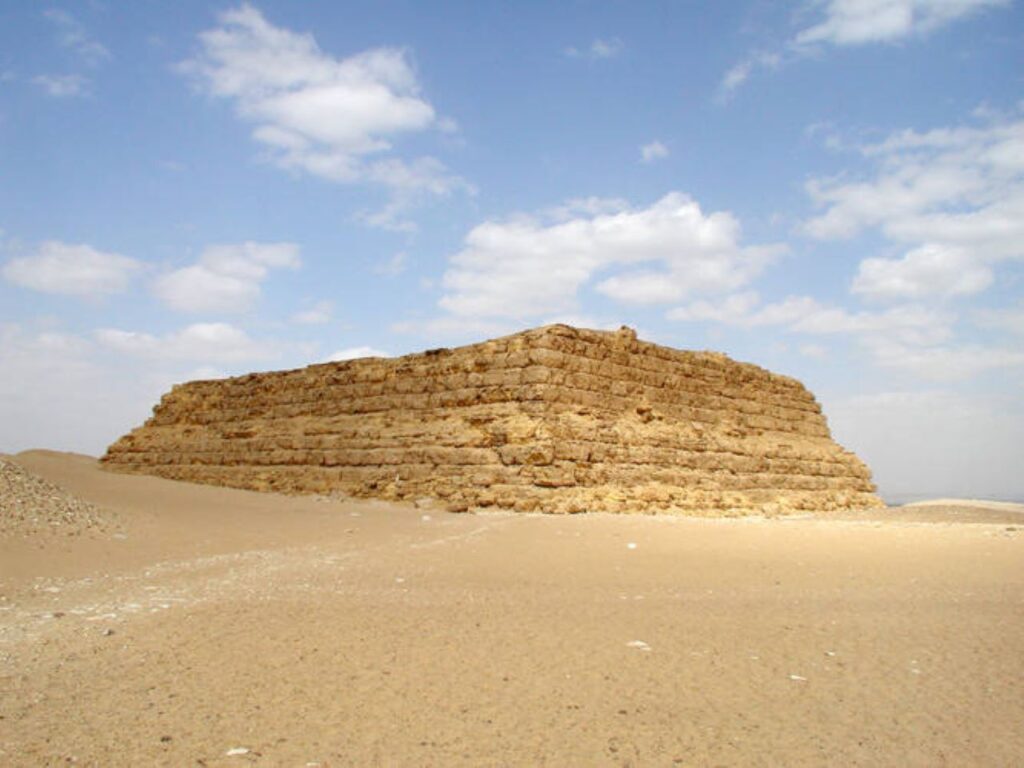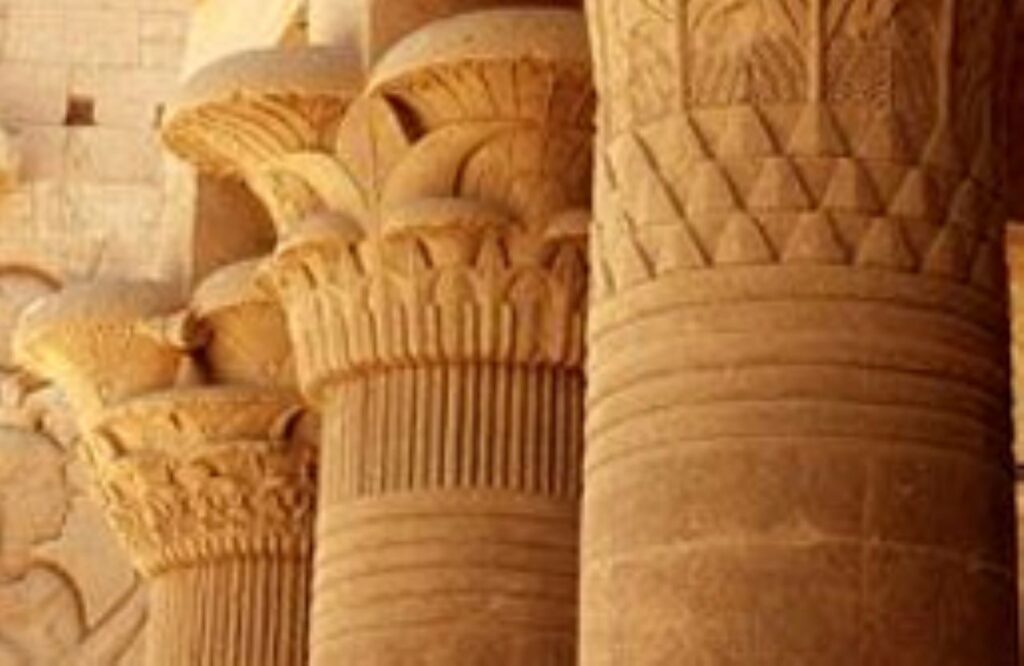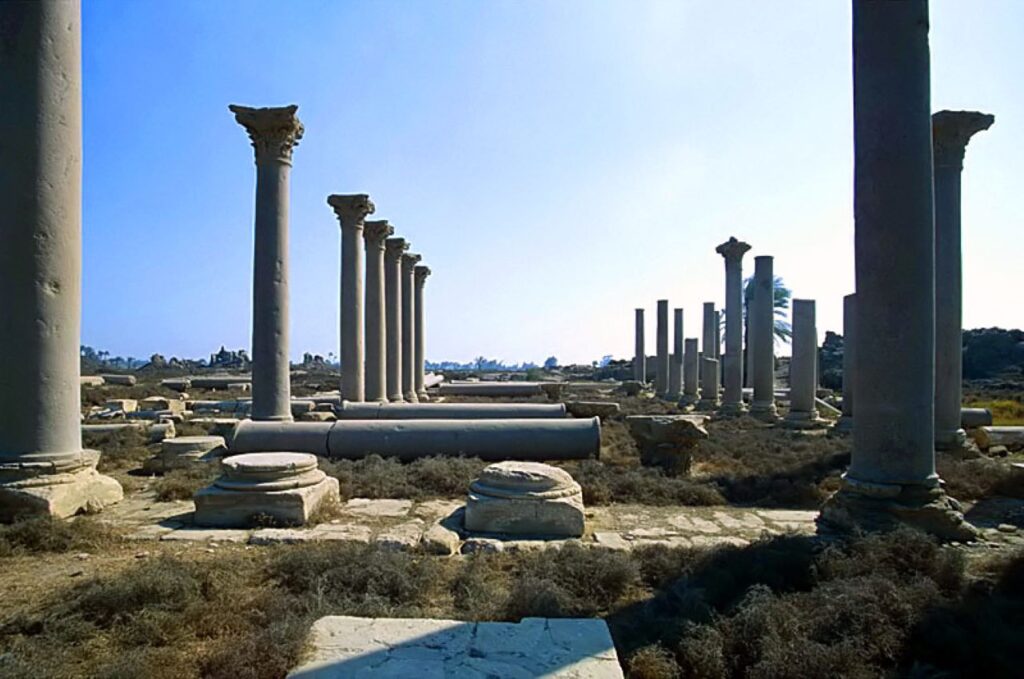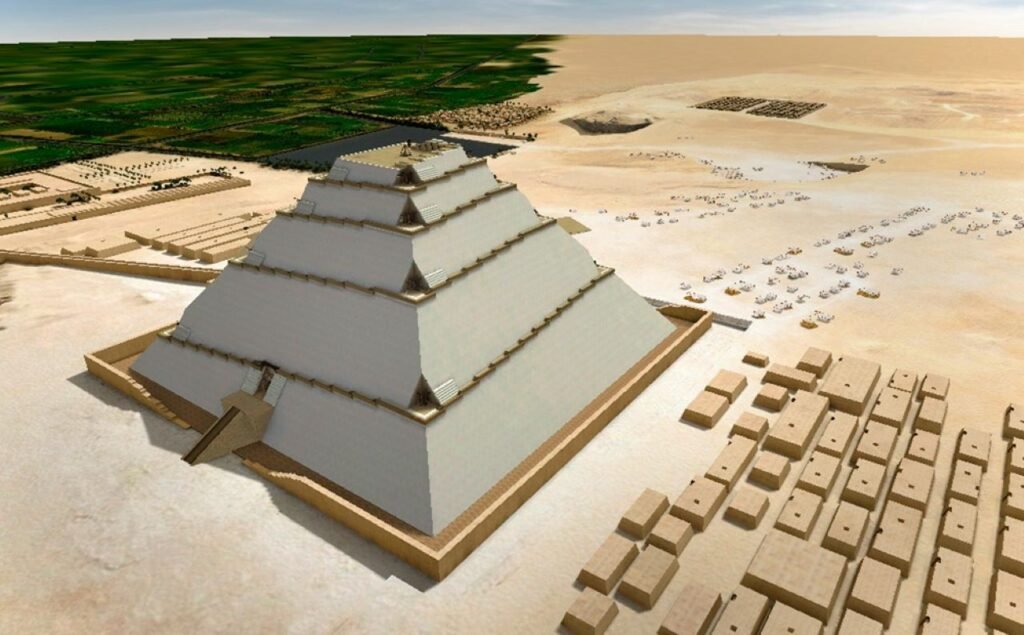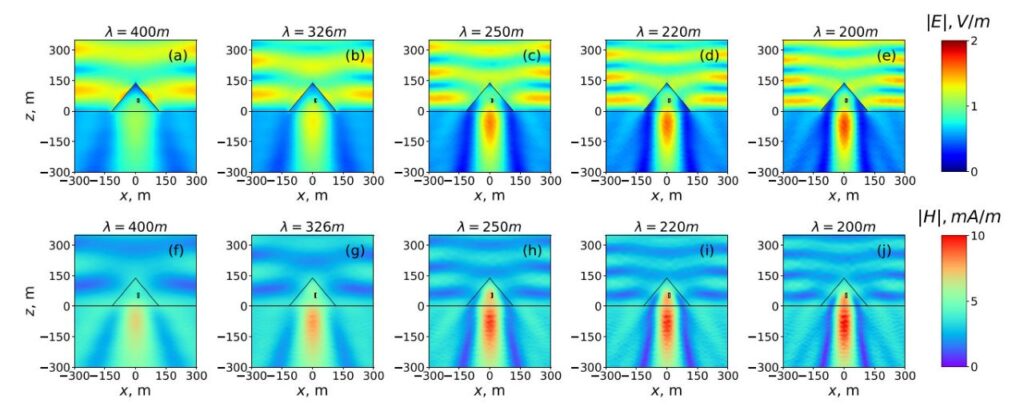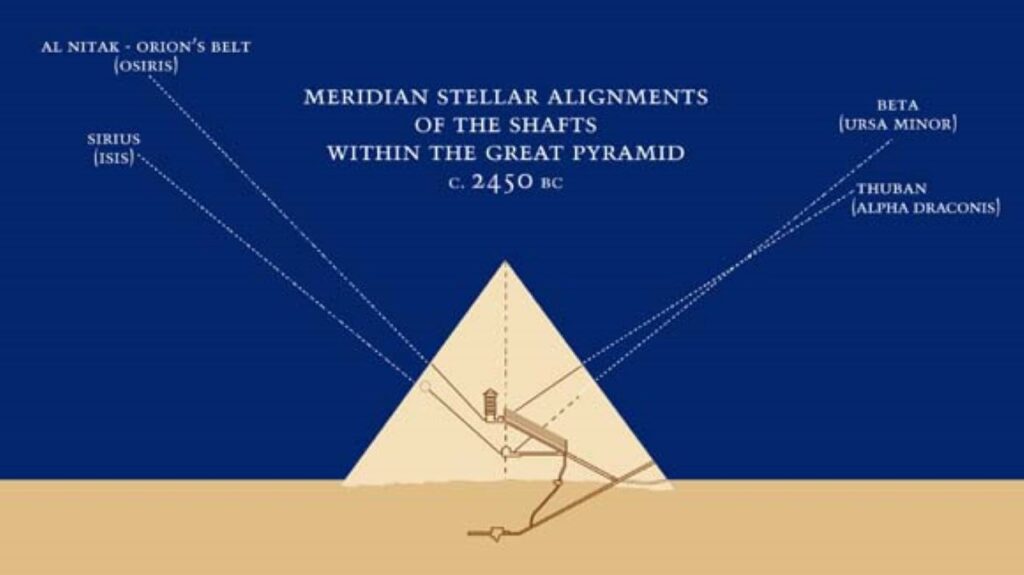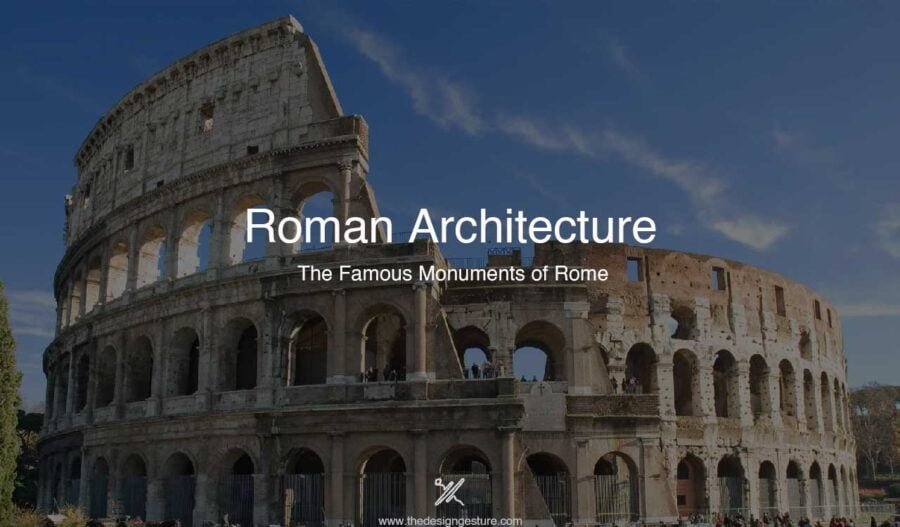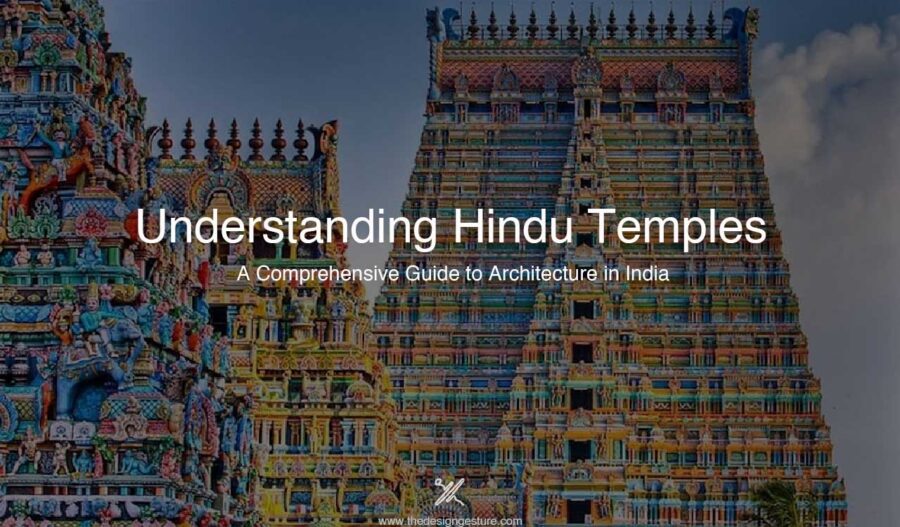Table of Contents
Introduction
The reign of the Egyptian Pharaohs lasted for about 2700 years with its first king Narmer in 3100 B.C.E. and concluded with the death of Cleopatra VII in 30 B.C.E. During this long period, there were times of strong centralized rule, and periods of much weaker which led to colonization from other rulers and kingdoms, eventually leading to the downfall of the empire.
So many Egyptian ancient architecture was built around Egypt by Amenhotep III (1286 – 1353 BCE) were credited by early scholars to an exceptionally long reign. Over 250 buildings, monuments, steles, and temples were commissioned by Amenhotep III, credited by many to be the one who increased general interest in Architecture and Egyptian designs.
Ranging from pyramids to temples, The Egyptian Architecture is a vast and exceptionally interesting subject considering the time and the grandeur of the structures. Let’s try and break down what happened at a specific point in time and how a simple stone revolutionized the world’s most influential architecture to date.
Evolution of The Egyptian Architecture
Egyptian ancient architecture is not just a style, but a set of styles with some differences over time.
Bench-shaped mounds called mastabas were the early Egyptian architecture of king’s tombs. Around 2780 B.C. the first pyramid was built by the architect of King Djoser, Imhotep, as he placed in a stack of six mastabas, one smaller than the one below, to form a pyramid in steps. On the west bank of the River Nile at Sakkara near Memphis stands this step pyramid. It contains different rooms and passages, like later pyramids, including the King’s burial chamber.
During the reign of King Snefru, Fourth Dynasty Founder (2680 – 2560 BCE), the transition from Step Pyramid into the true, smooth-sided pyramid took place. A pyramid was built at Medum, then filled with stone, and covered with a limestone casing. In the vicinity of Bahshur, the Egyptian design of a pyramid that appeared to be smooth-edged started taking life. But the angle is decreased from 51 to 43 degrees, and the sides rise less sharply, which makes it known as the Bent Pyramid. During construction, the angle change was probably made to give the building more stability.
Locally available and abundant, mud-brick and limestone were built by levied workers in most Egyptian monuments. The post and lintel construction methods were employed in monumental buildings. Many structures were astronomically aligned. Columns were typical of the Egyptian civilization, decorated with capitals that resemble important plants like papyrus.
Egyptian ancient architecture and its motifs had an impact on architecture elsewhere, first reaching the world in Orientalization, and then again in Egyptomania in the 19th century, which led to the popularization of the dreamy idea of pharaohs and their luxury, although real life was miles away from fantasy.
Mystery and Myth Around It
In the city of Hermopolis, the myth of creation focussed on the nature of the universe before world creation. A set of eight gods called the Ogdoad represented the inherent properties of primeval waters.
Probably the first civilization to construct temples dedicated to their dead, Egyptians set the tone for a new genre of architecture with revolutionary Egyptian designs.
Perhaps the biggest mystery and the aura surrounding Egyptian ancient architecture relates to its avant-garde architecture and astronomical accuracy in an age way behind any technological advancements. From the construction of pyramids to shafts that open up to point to a certain star in the sky on a certain day in the year, ancient Egyptian Architects and their creations have baffled historians and civilians alike for many years now.
Two major temples, cult temples, and burial or mortuary temples, can be distinguished from Egyptian ancient architecture. The cult temples contained the images of gods and received daily cults; while the latter contained a sanctuary for the funerary cult of dead kings.
The Egyptian cult temple in the Old Kingdon is generally thought to have been most owed to Re, the Sun God cult in Heliopolis that was probably open in plan and lacked a shrine. Among cult temples, Sun temples were unique, and worship focused on a cult object, the benben, a squat obelisk placed in full sunlight.
This gives rise to the billion-dollar question: How were the pyramids built? In an age where manual labor was the only source of construction fuel and when the average human lifespan was 40 years, how were the locals able to construct such huge mathematically and astronomically accurate structures for their day and age?
Enter, Jean-Pierre Houdin, a French architect, how might’ve just cracked the mystery. In 1999, Houdin’s father, a retired civil engineer was very curious about the subject and started to develop ideas in which the pyramid could have been built from within.
In 2005, Dassault Systèmes’ Mehdi Tayoubi and Richard Breitner invited Houdin to join a new “Passion for innovation” sponsorship program. Using software applications like CATIA to reconstitute a three-dimensional site for this gigantic construction, they were able to test the Egyptian monument and whether this approach is plausible in real-time. Tayoubi and his team used 3D technology as a teaching medium to explain and communicate it and suggested an interactive three-dimensional journey through time.
Their scheme is to build the first 30% of the pyramid with a regular external ramp, whereby an “internal ramp” takes stones beyond this height. The external ramp stones are recycled to the top stories, explaining the otherwise puzzling absence of ramp evidence. Later on, by x-ray technology scientists did find evidence of an internal ramp that would’ve been used to construct the pyramid front the inside out, although the theory largely remains unsolved and unproven.
A study recently showed that the Egyptian Great Pyramid focuses – under resonance conditions – on electromagnetic energy in its inner areas and beneath its foundation. This continues to battle modern-day scientists on the holistic approach of Egyptian ancient architecture.
Another speculation is that beings of other worlds aka. aliens might have aided in the construction of the structures as it was perceived humanly impossible. The high precision of the stones used in making the pyramids replicate a laser cutting machine technology which is a rather recent discovery. Some hieroglyphics on temples also indicate extraterrestrial activity and frequent visits by beings in a “flying disc”. This raises questions that cannot be answered.
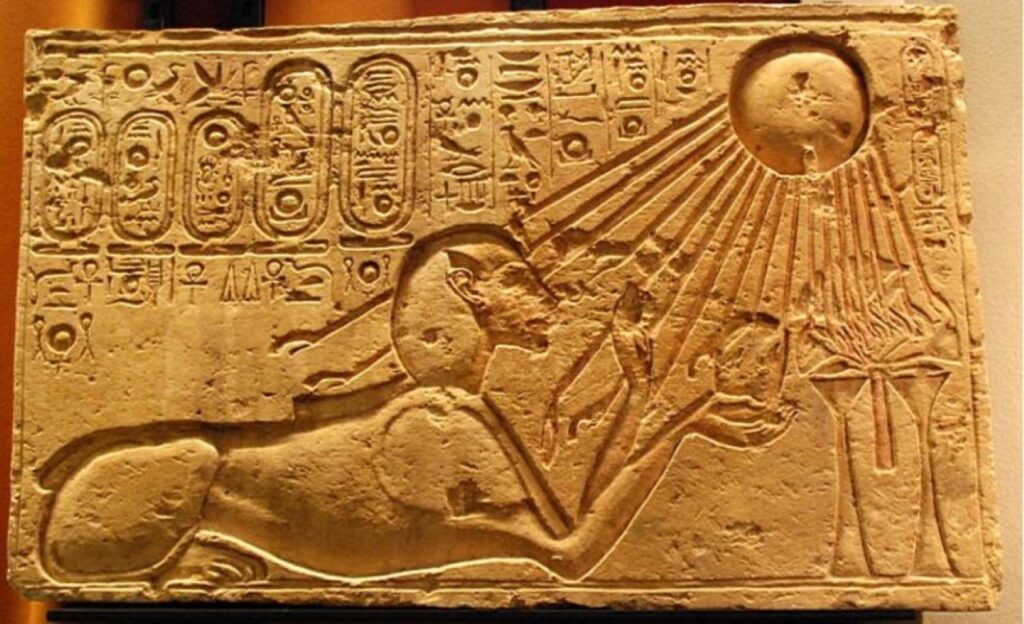
Astronomical Accuracy Behind The Structures
The Egyptians wanted meaningful structures to be built. They, therefore, believed that their buildings were aligned with the main stars in the belief that the cosmic rays would aid in their prosperity. Air shafts were in alignment with the Thuban in the king’s chamber, the Pole star as it is now known. Temples were more important events such as solstices and equinoxes, connected astronomically. Currently, it requires accurate measures; however, they were successful in doing this without “help”.

The Egyptians thought that the gods were living in the Duat, the Osiri kingdom. It is located in the sky region where Sirius and Orion heliacally rise in the morning in the summer solstice just before the sun. Hence, the Egyptian monuments were shaped to follow these heavenly bodies.
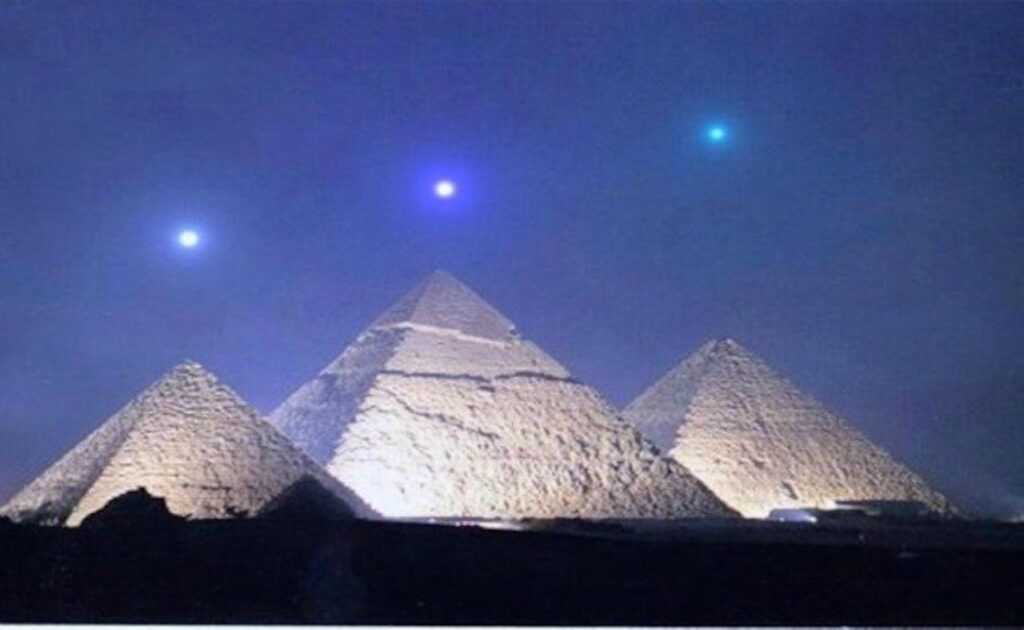
Architecture and Scripture
The word hieroglyphic means sacred writings or carvings.
Hieroglyphics were a major part of Egyptian architecture and art. They depicted everything from the birth and death of civilizations to the perils that they went through as a society. They were probably the first generation to ever consider timing in their successes and failures for the next world to see. Initially inscribed on papyrus leaves, they moved on to stone tablets and even further on the walls of temples. They take you on a journey almost in the style of storytelling to the time in which they are set in.
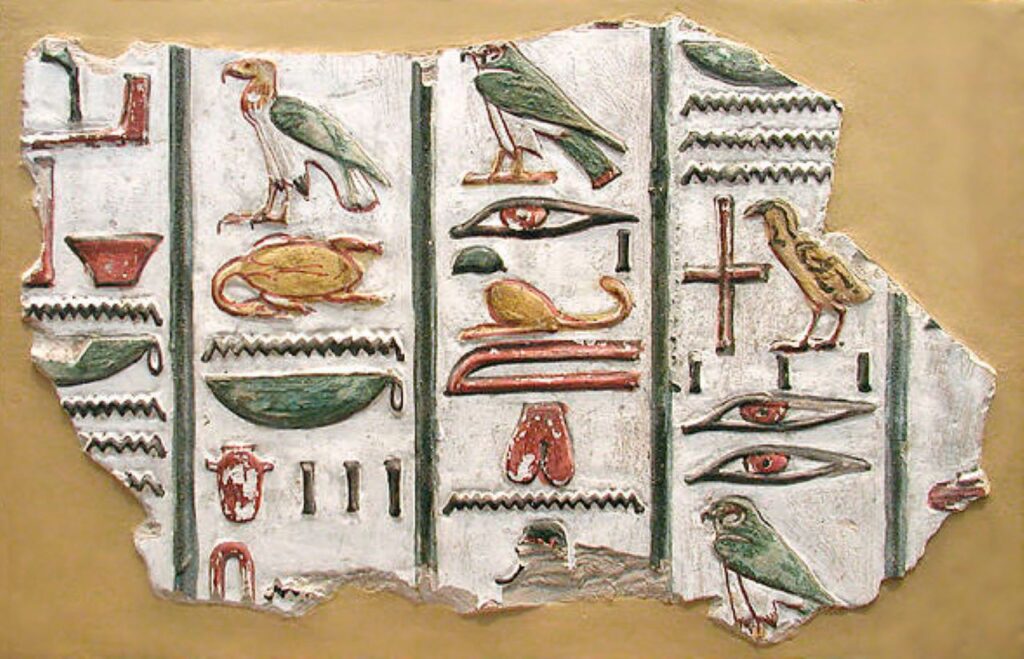
In the classical language of the Middle Kingdom, the Egyptian hieroglyphs have developed into an adulterated writing scheme used to record monuments; during the period around 900 different signs were used.
It was believed that words and names written in hieroglyphs had magical power. This is why funeral texts were written on the coffins and tomb walls with the names of the deceased. The gods heard the prayers, and the people were protected from harm. The Egyptians painted their walls and roofs, believing that those who had gone through could take with them all the images of their lives and only the dead Egyptian gods would ever be able to see the work. Such was the grandeur of Egyptian architecture and art.
Iconic Structures
The Sphinx
Made of limestone, The Great Sphinx of Giza constitutes a statue of a reclining sphinx, a mythical creature with the head of a man and the body of a lion. Standing on the Giza plateau on the west bank of the Nile in Egypt, the exceptional piece of Egyptian architecture faces west to east with the face appearing to represent the Pharaoh Kahfre. The original Sphinx shape was cut out of the bedrock and restored with limestone block layers. Although the nose is broken. it is Egypt’s oldest known monumental statue and one of the world’s most recognizable.
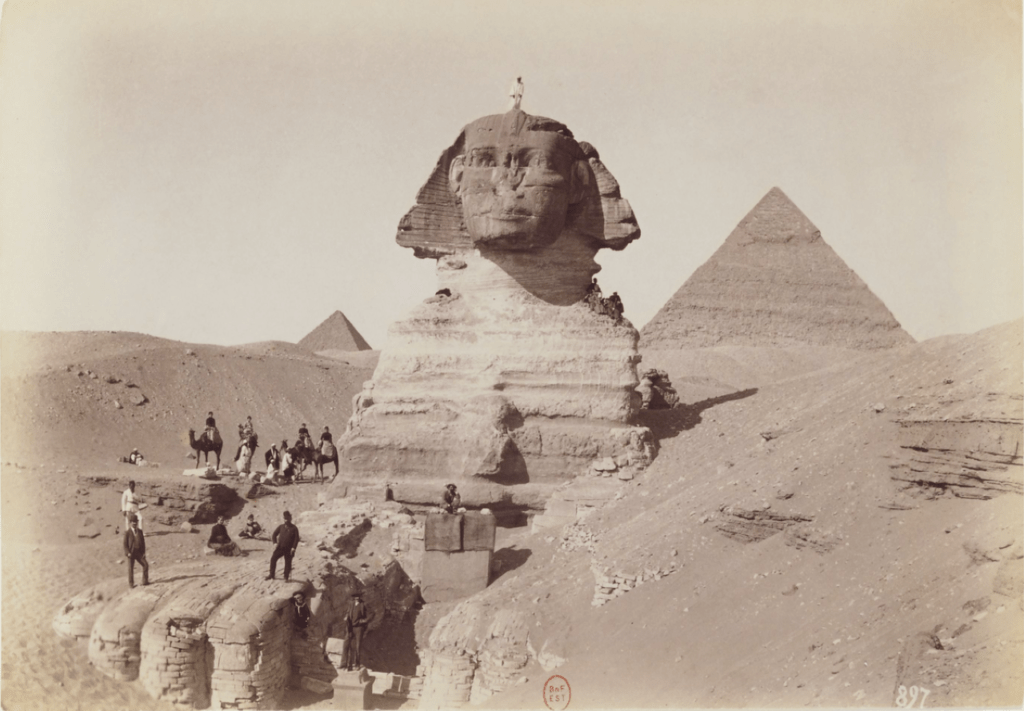

Khufu Pyramid or Pyramid of Giza
The Great Pyramid of Giza is the oldest and the largest pyramid in the Giza pyramid complex, currently situated on Giza bordered by Greater Cairo, Egypt. It is also known as the Pyramid of Khufu or the Pyramid of Cheops. One of the seven wonders of the Ancient world, a piece of Egyptian ancient architecture continues to remain largely intact. Built for the fourth dynasty Egyptian Pharaoh Khufu, it is estimated that the pyramid was built in the 26th century BC in 27 years of construction time.

The pyramid was built with locally available limestone from quarries and an estimated 2.3 million large blocks were used that weigh 6 million tonnes in total. The pyramid was once topped by a capstone known as pyramidion which is now missing. It was speculated to be made out of limestone, granite, and basalt but is widely believed in pop culture to be made out of solid gold.

Tutankhamun’s Tomb
Devoid of external displays of wealth, Tutankhamun’s tomb had been buried deep down in the valley of kings for thousands of years until in 1922, The tube was disturbed and found by Howard Carter. The famed is egyptologist and his men found the Tomb to be densely packed with items in great disarray with multiple robberies to have occurred in the past. Numerous items including a coffin made of solid gold, jewelry, bread clothing, statues, chariots, weapons, and of course the mummified body of King Tut were found.

For the final excavation and data collection, the tomb took 8 years to completely be documented. Probably one of the most significant findings of the century, King Tut’s Tomb, considering his position, was not heavily ornamented when compared to the other pharaohs, which raises a few eyebrows. One reason could be due to his untimely death at the age of around 16 to 19 years.
And who can forget Howard’s infamous quote from when he could peek into the tomb with the faint light of a candlestick. I remember ditching my biology book for the one I had picked up in the school library called “The Discovery of the tomb of Tutankhamen” by Howard Carter himself. As he uttered the words “I see wonderful things”, a spark was ignited in me that day which has led to me writing this article today. Strange ways of life!

